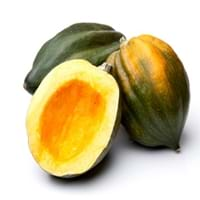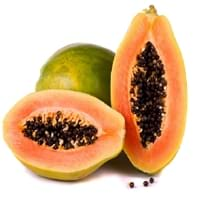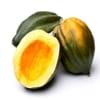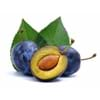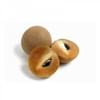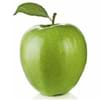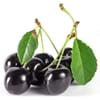Health Benefits
Anti-inflammatory properties, Arthritis treatment, Regulates Blood Sugar
Arthritis prevention, Asthma treatment, Cancer prevention, Heart care, Prevents macular degeneration, Prevents rheumatoid
General Benefits
Boosts immune system, Controls blood sugar levels, Digestive aid
Anti-inflammatory properties, Boosts immune system, Digestive aid, Healing of wounds, Maintains healthy cholesterol level, Strengthens bones
Skin Benefits
Nourishes skin, Protects skin from oxidative stress
Anti-aging benefits, Hydrates skin, Skin revitalization, Treatment of acne, Treatment of dark spots
Hair Benefits
Prevents hair loss, Promotes longer and healthier hair, Regulates hair growth
Good conditioner, Promotes longer and healthier hair, Softening mask, Treatment of dandruff
Allergy Symptoms
Asthma, Red rash, Swelling of mouth, tongue or lips
Abdominal pains, Carotenemia on excessive consumtion, Latex Allergy
Side Effects
Diarrhoea, Vomiting
Allergic reaction, Skin problems, Possibly unsafe during pregnancy
Best Time to Eat
Along with meal, As a snack in the late afternoon, Don't eat after meal, Eat the fresh ones, avoid mixing with any other foods, don't eat after meal.
As a snack in the late afternoon, Don't consume at night and before bed, Don't eat after meal
Vitamin B5 (Pantothenic Acid)
Vitamin C (Ascorbic Acid)
Vitamin E (Tocopherole)
Not Available
Vitamin K (Phyllochinone)
Not Available
Lutein+Zeaxanthin
Not Available
Calories in Fresh Fruit with Peel
Not Available
Calories in Fresh Fruit without Peel
Not Available
Type
Berry
Melon, Tree fruit
Season
Winter
All seasons
Varieties
Bush Table Queen, Heirloom Table Queen, Festival Hybrid, Early Acorn Hybrid, Table Ace, Ebony and Cream of the Crop
Coorg Honey Dew, Pusa Dwarf, Pusa Giant, Pusa Majesty, Pusa Delicious, Pusa Dwarf, Solo, Ranchi, Taiwan-785 and Taiwan-786
Color
Dark green, Green-yellow, Orange green
Orange, Yellow
Inside Color
Yellow
Orange
Taste
Sweetish
Luscious, Sweet
Origin
Central America, North America, Unknown
Mexico, Central America
Soil Type
Well-drained
Rocky, Sandy, Well-drained
Climatic Conditions
Cold, Sunny
Warm, Without frosts
Facts about
- It was named as Acorn Squash for its resemblance to a large ribbed acorn.
- It is said that squash was being grown in Mexico as long as 10,000 years ago.
- It was the first food cultivated by native American Indians.
- Papaya seeds show contraceptive effects in male monkeys.
- Their seeds are used as a replacement for black pepper in some nations due to peppery taste.
- Papaya is known by funny names like paw paw or papaw and the mamao.
Other Countries
Egypt, India, Iran, Italy, Mexico, Russia, Turkey, Ukraine, United States of America
Brazil, Indonesia, Mexico, Nigeria
Top Importer
Costa Rica
United States of America
Top Exporter
United States of America
Mexico
Botanical Name
Cucurbita Pepo
Carica papaya
Synonym
Winter Squash
Not Available
Subkingdom
Tracheobionta
Tracheobionta
Division
Magnoliophyta
Magnoliophyta
Class
Magnoliopsida
Magnoliopsida
Subclass
Dillenhidae
Dillenhidae
Order
Cucurbitales
Brassicales
Family
Cucurbitaceae
Caricaceae
Generic Group
Not Available
Papaya
Difference Between Acorn squash and Papaya
We might think that Acorn squash and Papaya are similar with respect to nutritional value and health benefits. But the nutrient content of both fruits is different. Acorn squash and Papaya Facts such as their taste, shape, color, and size are also distinct. The difference between Acorn squash and Papaya is explained here.
The amount of calories in 100 gm of fresh Acorn squash and Papaya with peel is 40.00 kcal and Not Available and the amount of calories without peel is Not Available and 43.00 kcal respectively. Thus, Acorn squash and Papaya belong to Low Calorie Fruits and Low Calorie Fruits category.These fruits might or might not differ with respect to their scientific classification. The order of Acorn squash and Papaya is Cucurbitales and Brassicales respectively. Acorn squash belongs to Cucurbitaceae family and Papaya belongs to Caricaceae family. Acorn squash belongs to Cucurbita genus of Pepo species and Papaya belongs to Carica genus of C. papaya species. Beings plants, both fruits belong to Plantae Kingdom.
